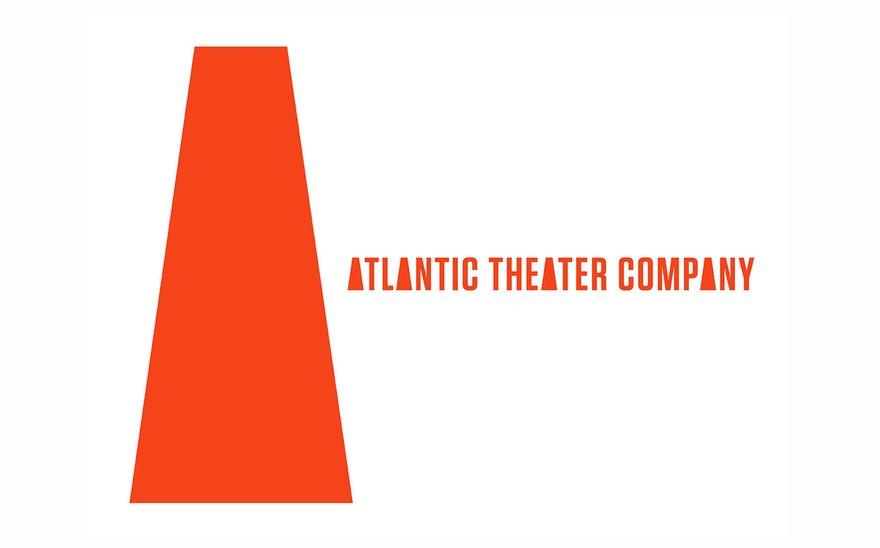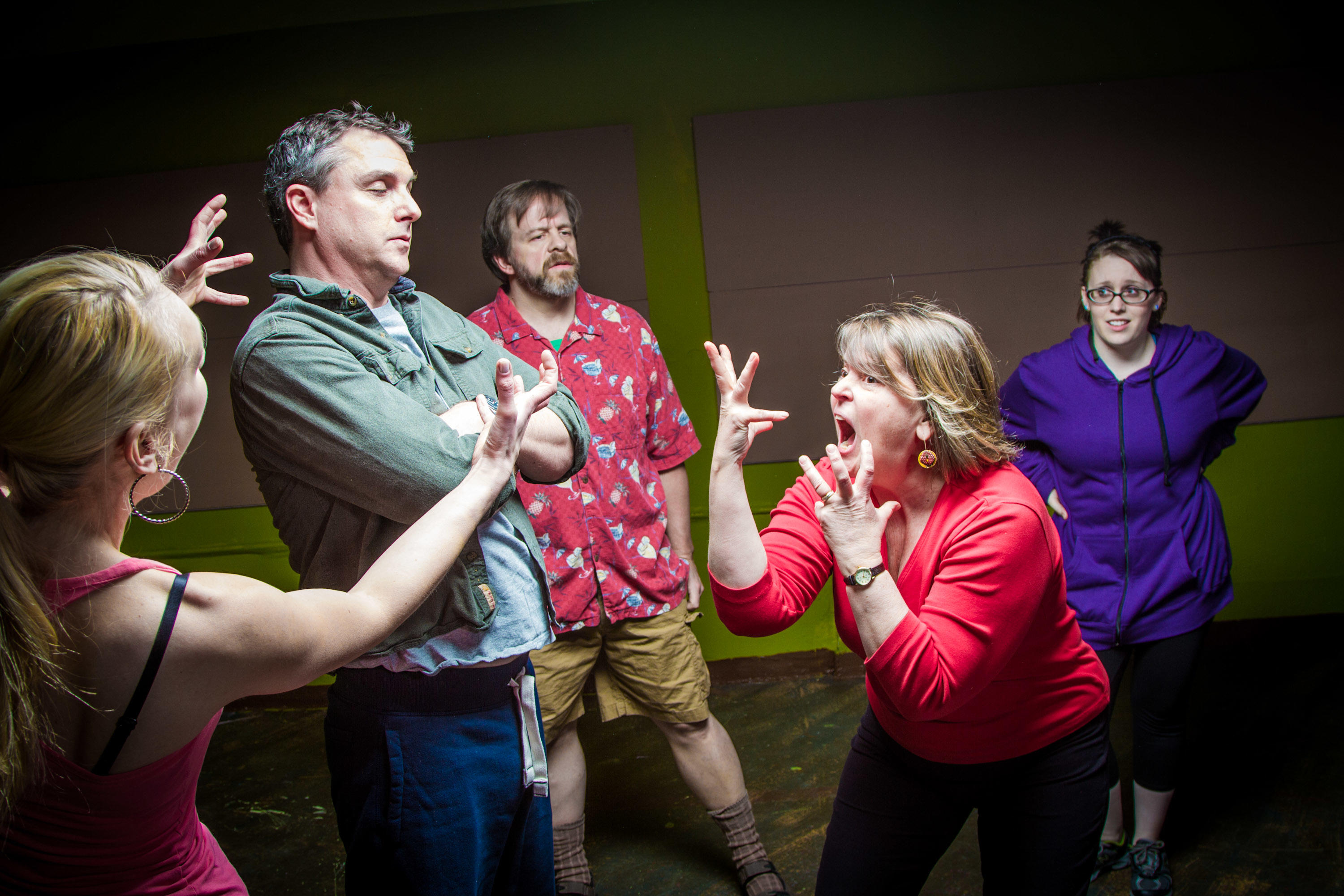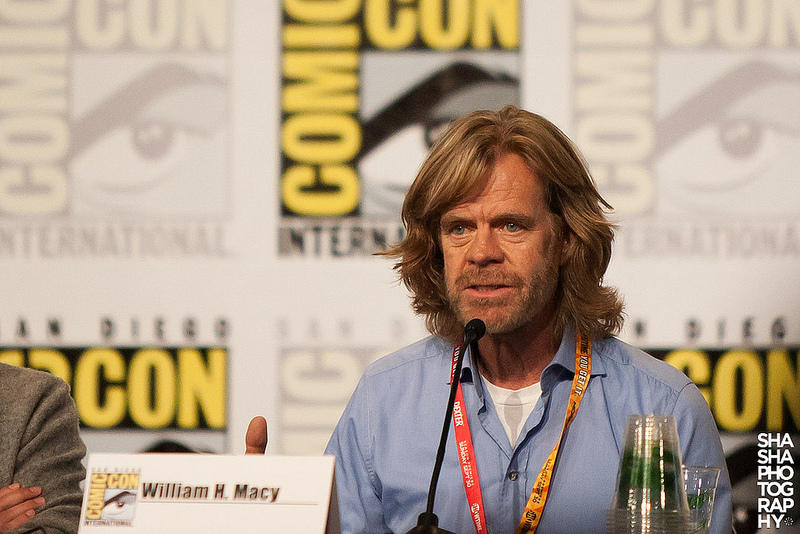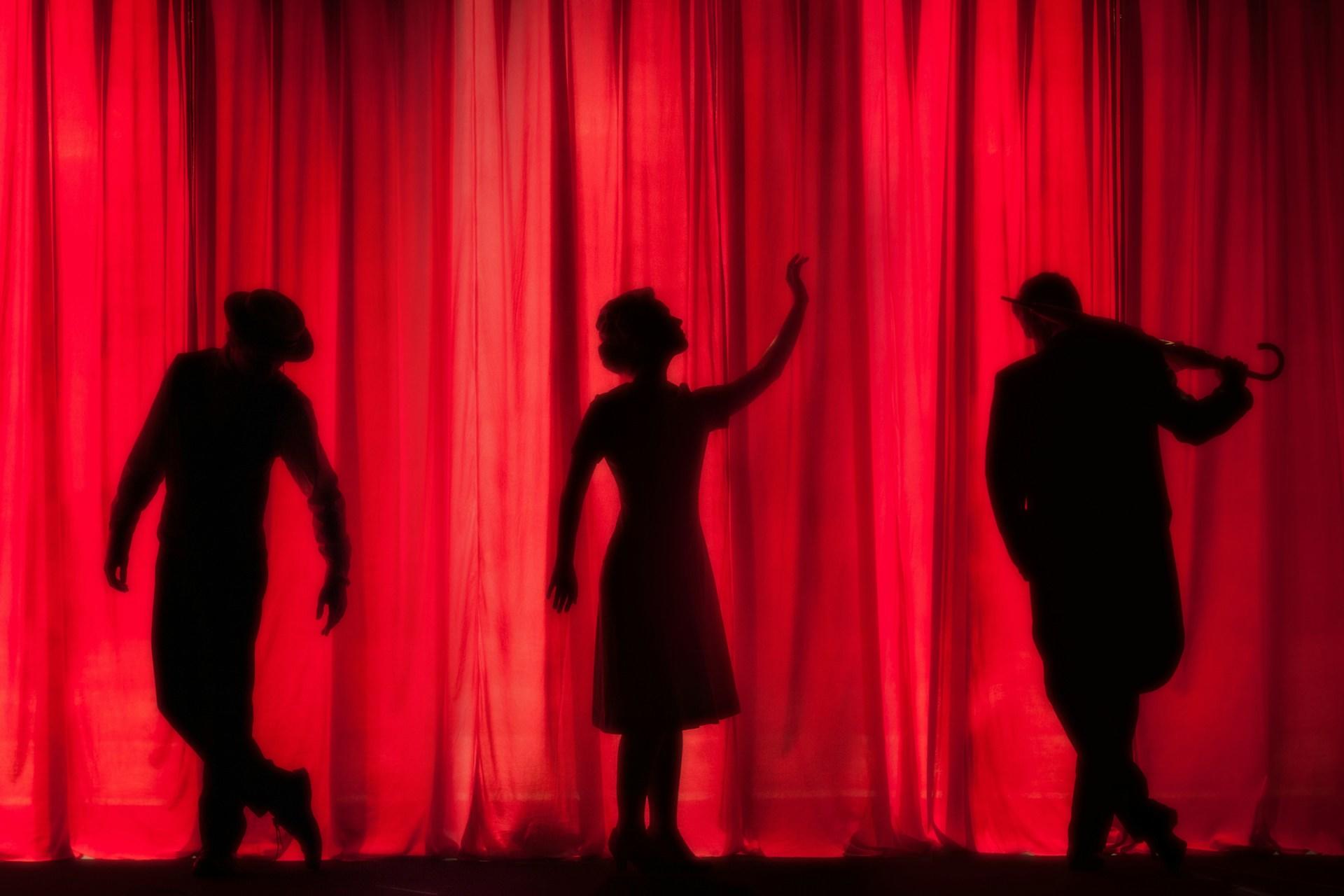Before we start, it's important to note that this article will discuss Practical Aesthetics as it relates to the field of acting, and not the idea of art out forward by Jill Bennett in her 2012 paperback.
"Acting is a very personal process. It has to do with expressing your own personality, and discovering the character you're playing through your own experience- so we're all different." -Ian McKellen
As Sir McKellen says, we're discussing a vulnerable, and soul-bearing art. The best thespians dive into roles without fear to become a vessel of another person whose story deserves to be told and offer a truthful delivery.
A dominant performance from a seasoned thespian can make an audience cry, laugh, cheer and feel heartbreak, receiving rave reviews all within a few minutes.
While many aspiring dramatists have dreams of making it big in Hollywood for fame and fortune, others do it just for the love of the art.
Theatre, film and television actors study and implement different acting techniques over the years to portray characters realistically. Since there are so many techniques to choose from, a performer can decide to use one that best fits their artistic abilities.
Robert De Niro swears by the Method whereas Diane Keaton applies devices of the Meisner technique in all her performances.
As a young face new to the game, it is highly recommended to attend various classes and events that implement different performing techniques. Once a dramatist has tried these different styles, they can choose the one that works best for their art.
Participating in many workshops is also an excellent idea for new performers in the show business industry who want to stand out among the crowd of other auditioners.
Budding actors need to hone their skills before auditions and screen tests to offer casting directors precisely what they are looking for. Being able to look at and dive into a role from different angles can show versatility.
Therefore, without further ado, Superprof will analyse another popular acting methodology that is worthy of acknowledgement. What is this beautiful art form to which we are referring?
Folks we are talking about the practical aesthetics technique. In today's article, we will mention the origin, the elements and how they differ from the devices of classical drama, where to study and famous actors who use it.
Ladies and gentlemen, are you prepared for a thrilling ride of techniques used in performing arts? I sure do hope so!

The Origins of Practical Aesthetics

In the summers of 1983 and 1984 in the American state of Vermont, there were NYU acting workshop events held by playwright David Mamet and actor William H. Macy. During these summer workshops, the techniques of practical aesthetics were developed.
As a result of Mamet's and Macy's newly discovered acting technique, in 1985 the Atlantic Theater Company was founded in New York City along with 30 of their students from New York University.
Mamet and Macy were inspired to found a theatre teaching their method by the historical examples of the Group Theatre, another school in New York City, and Konstantin Stanislavski, known as the father of modern-day acting techniques.
This great institution is still in operation today and is supported by the same belief of Macy and Mamet: the story of a play and the overall intent of its playwright are the fundamental stock of the creative process.
Since its opening in 1985, the Atlantic Theatre Company (ATC) has mounted hundreds of plays, many by new writers, using the technique. Notable plays performed on their stage include Spring Awakening, The Band's Visit and Hangmen.
Alright, now that we have acquired a basic understanding of the origin of these ideas, it's important to ask what is the thinking or philosophy behind them?
Well, it is an approach to art that is based on the work of Sanford Meisner and Konstantin Stanislavski's System. It is a no-nonsense approach to acting. Mamet developed this method as a way to reduce any thespian's tendency towards self-conscious introspection.
Practical aesthetics can be understood using the following motto: invent nothing, deny nothing, accept everything and get on with it!
More information about the practical aesthetic methodology can be discovered in A Practical Handbook for the Actor written by Melissa Bruder and published in 1986, one of its foundational books.
According to its description, the book, which is available to buy as an ebook (RRP £6) or paperback (RRP £10), is "written for any actor who has ever experienced the frustrations of acting classes that lacked clarity and objectivity."
To this end, this product aims to provide tools that allow thespians to find the truth of a role under imaginary, fiction-like circumstances. While many years have passed, this book still has great reviews.
Reading an ebook or paperback copy can be a good start for those who are new to this theory. This book could also make a great gift for any dramatists in your circle who are looking for interesting reading that can deepen their knowledge of their art.
Other books and ebooks that could be worth reading in order to learn more about this style include:
- True and False: Heresy and Common Sense for the Actor by David Mamet- Written by one of the innovators of the learning style, this book goes deep into the philosophy and thinking that went into developing this learning experience. It might not teach you how to act, but it will deepen your knowledge of the creators and their ideas. (RRP £8)
- The Monologue Audition by Karen Kohlhaas- Kohlhass was a member of the Atlantic Theater ensemble and uses her knowledge in this fascinating paperback. While it focuses on only one type of scene, of the books we've mentioned, it's the item that offers the most concrete applications of the different techniques you can learn by following Mamet and Macy's thinking. (RRP £16)
If you want to get more information about where this style of teaching comes from, you can also read about Sanford Meisner and the philosophy that he developed, which is one of its influences.
Elements of Mamet and Macy's Technique

While it is true that Mamet and Macy's ideas are based on other well-known acting techniques from Meisner and Stanislavski, it has unique elements that make it very different from other popular techniques and methods used by stars working today.
Mamet and Macy's methodology is mainly made up of three components: repetition, performance techniques and script analysis.
Students accomplish many repetition exercises that start simple and then become more complex as time goes on. Examples of repetition exercises depend on the organisation where the practical aesthetics technique is being taught.
Nevertheless, a standard activity may include observing one another without consciously looking for anything in particular and then when a thought comes to a person they make a verbalised statement.
For example, the person might say, "You're wearing black jeans" and then the partner would repeat and say, "I am wearing black jeans." As time goes on, complex repetition exercises are done with the purpose of remarking on your partner's thoughts, feelings or behaviour.
Repetition exercises are efficient and have the purpose of teaching budding actors to read other people's facial expressions, hone their delivery skills to respond quickly and appropriately at the right moment and, finally, explain to pupils that it's not what you say but how you say it.
Another fundamental component of Mamet and Macy's method is the performance technique. Aspiring stars are taught about necessary actions which are what the characters are trying to achieve in each scene.
11 essential actions are part of practical aesthetics, and they are the following:
- To get someone on my team,
- To lay down the law,
- To draw the dividing line,
- To get someone to take a significant risk,
- To understand what is rightfully mine,
- To get someone to see the big picture,
- To enlighten someone to a higher understanding,
- To tell a simple story,
- To get to the bottom of something,
- To close the deal,
- To get someone to throw a necessary lifeline.
It is important to state that necessary actions have the purpose of focusing the thespian on what their character wants to achieve in the scene, rather than force emotion and try to make you feel something that you don't.
Hypothetical situations are exercised to have students practise essential actions in the classroom or at home.
When it comes to script analysis, the practical aesthetics methodology is entirely writer-centred. The writer is the creator of the fiction and the character and the learner analyses the notes of the writer to deepen their knowledge of the character.
Taking these steps to understand the character from the writer's point of view can allow actors to deliver a performance that is true to the script and more effective overall for the audience. The writer makes things up, and the player complies with their ideas.
It is important to mention that a thespian studying Mamet and Macy's methodology needs to be patient, committed and have an open mind. Like all good things, mastering acting techniques takes time. Remember, Rome was not built in a day!
Discover effective acting classes Melbourne when you search for a coach on Superprof!

Where to Study Practical Aesthetics
Since Mamet and Macy's methodology is well-known, there are many schools in the United Kingdom and abroad that offer courses, workshops and training programmes to acquire the basics of these devices.
The following are some of the best places in the UK to study the practical aesthetics method:
- Play with Fire Productions: a Manchester-based business that offers practical aesthetics workshops. They are taught by Play with Fire's artistic director Daniel Bradford and only costs £80. The workshop introduces learners to the basics of the practical aesthetics technique,
- Acting Coach Scotland: located in Glasgow, Scotland this school has the primary goal of teaching the practical aesthetics method. They offer full-time or part-time acting courses to students of all ages, and their testimonials are glowing with the kind remarks of past students who enjoyed taking classes at the Acting Coach Scotland school.
Discover effective acting classes Sydney!
Mamet and Macy's learning experience is much more common in the US, so here are a couple of the best acting schools outside of the UK to study practical aesthetics:
- ATC's Acting School: As previously mentioned, this organisation was founded by the pioneers of the practical aesthetics acting method, Macy and Mamet. There is a wide variety of acting programmes offered to interested ones such as the full-time conservatory, evening conservatory, spring programmes, summer programmes, part-time programmes and even courses for kids & teens,
- The ATC at NYU: As part of the New York University Tisch School of the Arts, the Atlantic's studio in New York offers a three-year program for students undertaking a Bachelor of Fine Arts in acting. It prepares them with performance experience, a concrete understanding of the philosophy and professional work skills.
- Practical Aesthetics Australia: mimicked after the studio in NYC, the PAA offers practical aesthetics classes in Sydney, Australia. There are a few classes offered such as the introduction to functional aesthetics that is an eight-week part-time intensive class, an intermediate scene class and a few master classes for those who want to be experts!
Take up acting courses here.
Stars Who Use the Practical Aesthetic Technique

Actors who apply the practical aesthetics technique in the portrayals of their characters create effective performances that are truly realistic and natural.
Many stars prefer to use practical aesthetic techniques in comparison to other more strenuous systems of acting such as the Method.
Some of the most well-known performers who use the practical aesthetics methodology include the following:
- William H. Macy: he is the co-theorist of the practical aesthetics method and uses its techniques to his advantage in all of his performances. He is best known for his film roles in Fargo and Seabiscuit and his television work in the hit series Shameless;
- Rose Byrne: known for her film performances in Bridesmaids, the X-Men franchise and Marie Antoinette, Byrne studied practical aesthetics at the PAA in Sydney, Australia to become one of the best-known actors using this acting method; and
- Felicity Huffman: the wife of William H. Macy who is best known for her Emmy winning role on Desperate Housewives, uses practically aesthetics in every one of her performances.
Learning more about practical aesthetics is a brilliant idea for all performers who want to become more skilled at their craft.
To become an accomplished performer it is essential to have a basic understanding of as many different ways to act as possible. The devices of classical acting, the intense approach of the Method, and Brecht's performance techniques are all essential performing arts methods with which to become familiar.
What To Do If You Can't Find a Local Course
As we mentioned earlier in the article, there are some schools in the UK that offer courses that focus specifically on this way to act, while many courses offer it as a smaller experience in a larger course.
In order to have lessons that are specifically focused on this type of acting, there are a few things to try. First, you can buy the different books we discussed earlier in the article, to get some background on the philosophy and applications.
Another idea is to find events and workshops in your area, which can sometimes even be free. These events are great as their also a way of being social with other thespians. For example, the Actor's Centre in London offers a 3-hour weekend course that teaches members about this technique.
If you can't find the books in stock or there are no social events in your area, you can also try taking private lessons from a drama teacher who specialises in this field. You can learn all about the aesthetic method and develop your talent.
Private classes are a great option as they can be totally tailored in order to match the experience the student is looking for. Students can also learn at their own pace as there are no other learners to slow them down.
However, this methodology is ideal for group work, so you might want to try getting a group of friends together for each lesson.
Find a drama teacher who is perfect for you or your kids on Superprof. You can even do a trial lesson free and buy lessons as a gift to a friend!















This is a very interesting article about PA.
From 2020, there is also my Acting School Armando Di Lillo Acting Studio in Italy where I teach the technique.
It’s a newborn reality with the aim to bring PA in Italy with acting classes held in Italian.
Thanks for sharing!